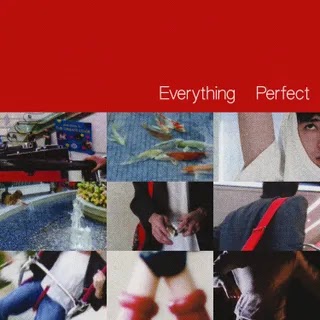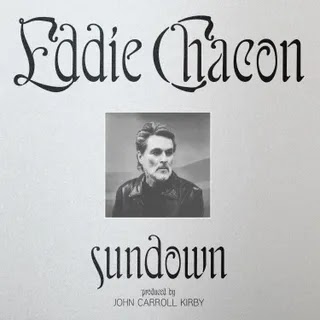Four new reissues explore the acclaimed Japanese producer’s work c. 1984-1985, as he set aside techno-pop in favor of spacious, imaginative ambient music.
After the dissolution of Japanese techno-pop pioneers Yellow Magic Orchestra following 1983’s Service (their final album until the one-off reunion Technodon a decade later), each of its members were eager to go their own way. Reluctant to call it a breakup, they opted for the softer term “fan out,” though creative differences had created such friction between the trio that it was difficult for them to keep working together. Beleaguered from staring into the spotlight of pop stardom, Haruomi Hosono let out a sigh of relief. “Our music happened to hit the chart and I had an awful time. I was too famous to walk around,” he told the Red Bull Music Academy in 2014. “As the dust settled, I was liberated at last. I love to be free.”
Wasting no time, Hosono teamed up with Japanese major label Teichiku in 1984 to create two new imprints that would allow him to explore his newfound freedom—Non-Standard, a haven for Hosono’s friends, collaborators, and protégés, and Monad, an outlet for his more experimental solo outings. No longer beholden to the demands of YMO’s label Alfa or the desires of his bandmates, Hosono receded from the limelight and immersed himself in his own musical interests. The years 1984 and 1985 would be some of his most productive as he “fanned out” in several directions, bearing truth to the euphemism used to describe YMO’s collapse. Four new reissues, courtesy of Teichiku, survey this critical period—painting, with broad strokes, a picture of Hosono’s wildly creative post-YMO output.
In its brief few years of original releases, Non-Standard would become a petri dish of innovation. Hosono was the first to give a home to Pizzicato Five, a group whose fusion of Japanese pop, soul, jazz, and western kitsch was instrumental to the popularization of Shibuya-kei, the pluralistic pop sound of Tokyo’s most fashionable district. He offered the first sighting of World Standard, multi-instrumentalist Sohichiro Suzuki’s globe-trotting love letter to exotica and Americana. Non-Standard was also the launching point for Hosono’s group Friends of Earth, a revolving cast of musicians that has included vocalist Miharu Koshi, Senegalese session percussionist Aïyb Dieng, and, strangely, James Brown and his star saxophonist Maceo Parker.
The following year, Hosono would narrow his focus with a trio of albums on Monad. Each is a collaborative effort, representing more facets of his fascinations. The Endless Talking, the least consequential, was composed for an Italian art exhibit titled “Japan, Avant Garde of the Future.” Hosono improvised its 13 sketches while looking at photographs of sculptures created for the show, resulting in short pieces intended to play on loop. The tracks are designed to talk endlessly, but not to each other as a cohesive body of work. “The Endless Talking” is the standout, a twinkling metronome of hypnotic melody—but it, too, is a reworked Muji composition.
Hosono takes a trip to Okinawa for Paradise View—the score for a film by the same name—exploring the musical traditions of the island prefecture while weaving in elements of gamelan and otherworldly chants. “The Paradise View” ties it all together into a compelling proof of concept, with Hosono plinking out a distinctly Okinawan melody as a sound reminiscent of Balinese gongs washes over it. Reaching across cultures and through time, Hosono crystallizes disparate influences into an image of a place that you wish really existed so that you could see it for yourself.
Mercuric Dance—the companion piece to a contemporary ballet by Arai Tadayoshi—stands as the most fully realized of the trilogy. It was based on Hosono’s time in scenic Amakawa Village, and the environmental themes run strong. Nara Prefecture (where Amakawa is located) is home to the highest concentration of protected cultural sites in Japan, and nearly a fifth of its area is national parkland. Hosono pays respect to the land with a series of compositions—each inspired by a celestial body—that shift slowly into one another, like a leisurely trip around the sun. With traditional Japanese percussion, soaring synth, and interspersed field recordings, Mercuric Dance unfolds like a time-lapse photo of a place slowly weathered by the passage of time.
Haruomi Hosono’s freewheeling spirit is what makes each phase of his endless reinvention so fascinating. After the dissolution of YMO, he made S·F·X, a pop album no one expected; then he didn’t make another for a long time, opting instead to set himself “adrift in the sea of ambient music,” as he later described it. In recent years, Hosono’s ambient work has attracted fresh interest—particularly the music he created for Muji around this time, which he’d since forgotten about. As they’ve been rediscovered by new listeners, the Muji compositions have lately gone somewhat viral, but the Teichiku albums, which iterate upon those ideas in bold and surprising ways, have yet to see their day. These reissues, though only a two-year snapshot of a long and winding career, contain a lot more music worth remembering.

















%20Music%20Album%20Reviews.webp)

0 comments:
Post a Comment